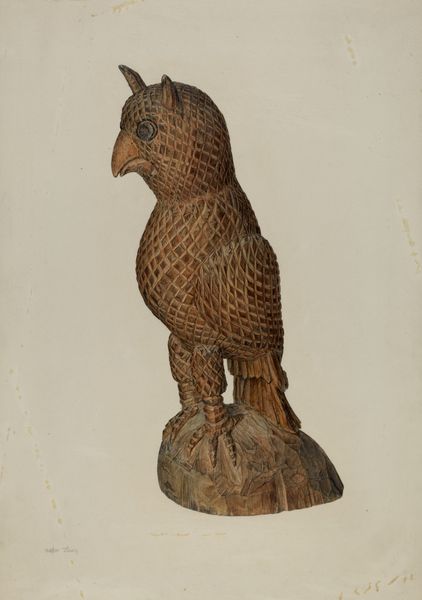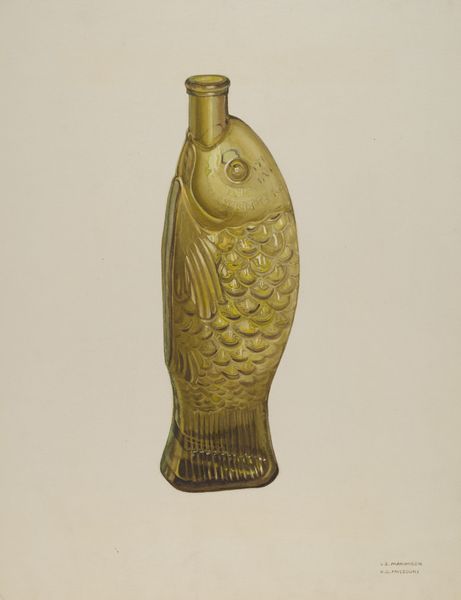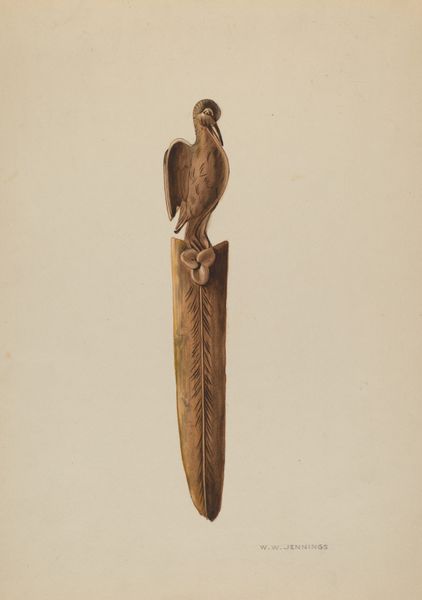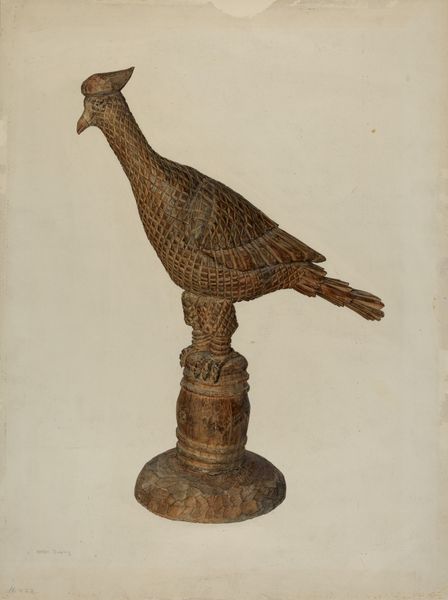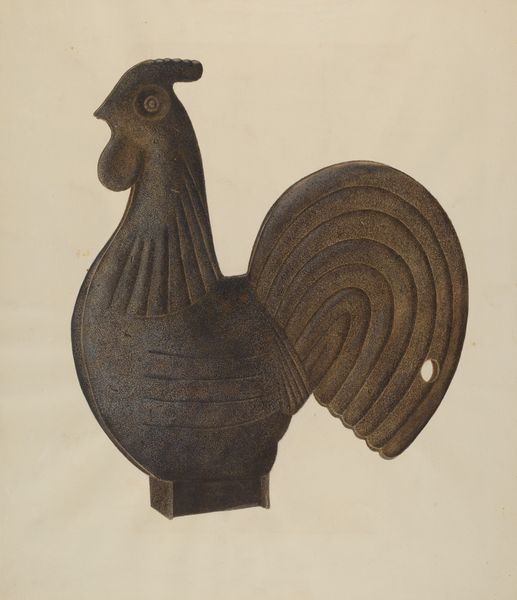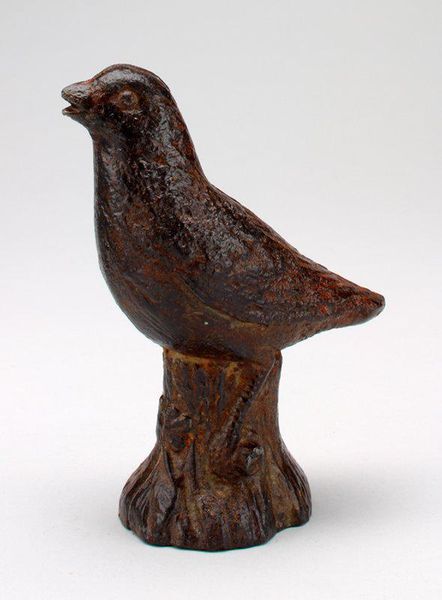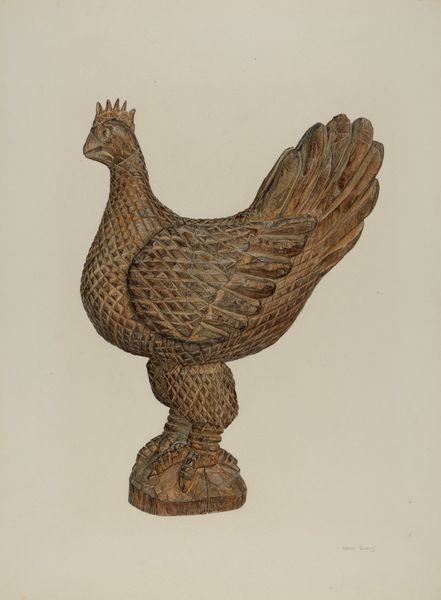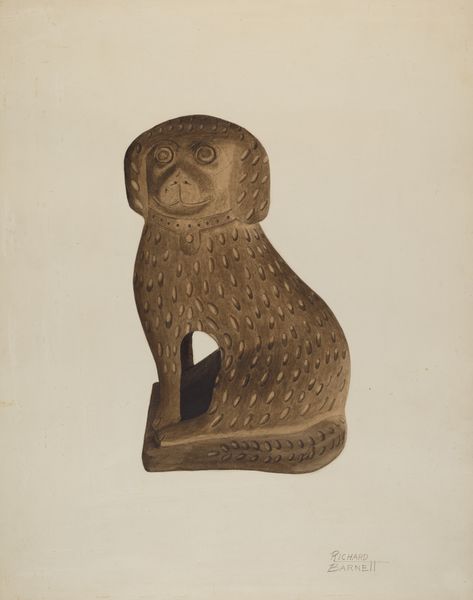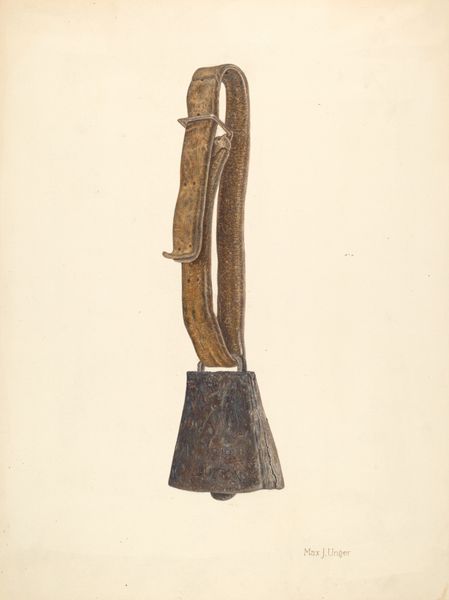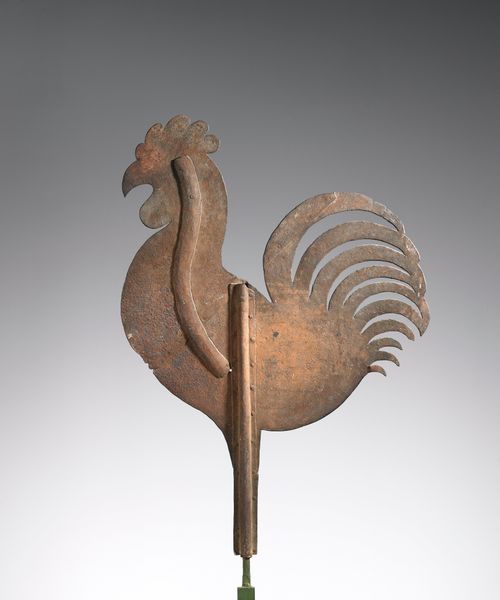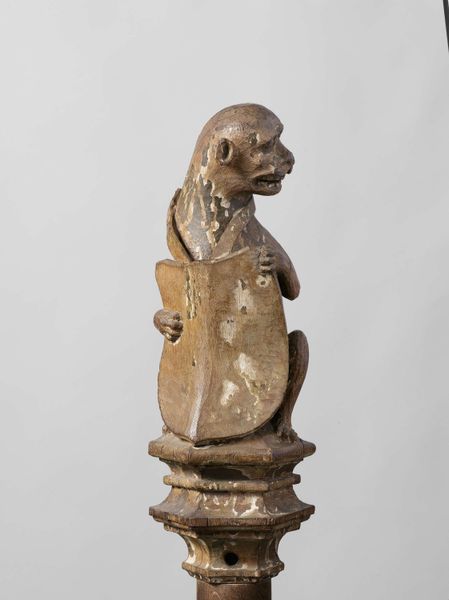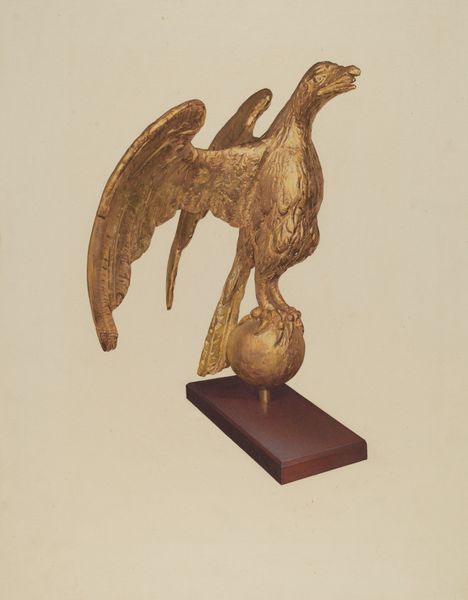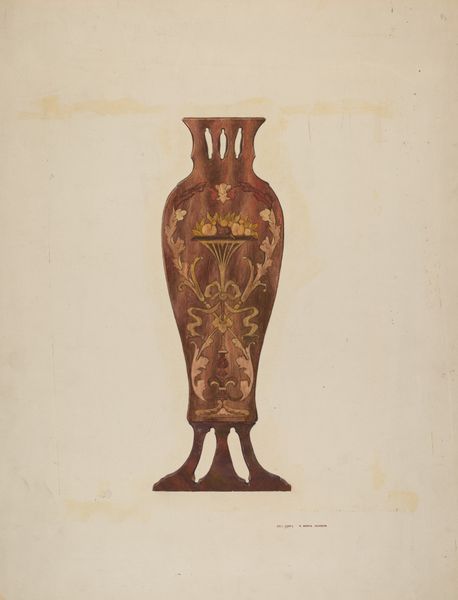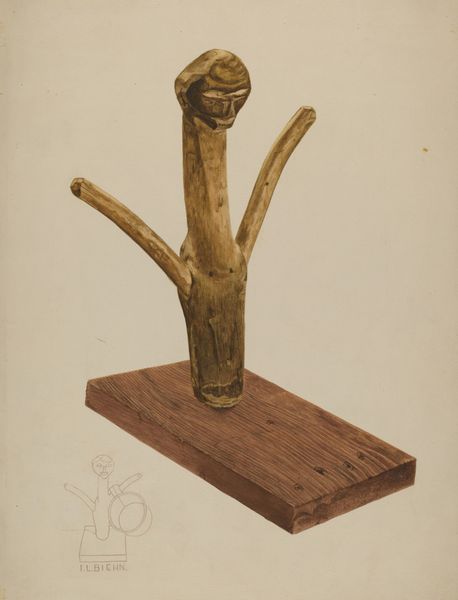
drawing, carving, sculpture, wood, charcoal
#
portrait
#
drawing
#
carving
#
sculpture
#
charcoal drawing
#
figuration
#
sculpture
#
wood
#
charcoal
#
academic-art
#
charcoal
#
realism
Dimensions: overall: 43.9 x 30.4 cm (17 5/16 x 11 15/16 in.) Original IAD Object: 2 5/8" wide; 2 5/8" deep; 10 3/4" high
Copyright: National Gallery of Art: CC0 1.0
Curator: Looking at this striking work, Hester Duany’s “Eagle” from around 1941, my immediate reaction is one of austerity. There’s something solemn about its pose. Editor: The carving certainly dictates that somber tone. I'm immediately drawn to the materiality. It's wood, isn’t it? And it looks almost as if the artist started with the intention of smooth lines, then abruptly decided on this repetitive, geometric pattern of cross-hatching. Curator: Indeed. Consider how the eagle serves as a timeless symbol of power, vision, and spiritual ascent. Across numerous cultures, it represents a connection between the earthly and divine realms. This object could have many associations beyond just representing the United States. Editor: Yes, the gridwork actually subverts any inherent grandiosity in the eagle as a symbol. By imposing this manufactured pattern on its surface, it seems almost... domesticated. There’s something subtly unsettling about it. What was the intended purpose of this piece? Was it always intended for display? Curator: Knowing how the image of an eagle became so prominent during the lead-up to World War II, I suspect that viewers might initially respond by associating the figure with a national symbol of strength and resolve during that period of upheaval and crisis. Editor: Right, the era profoundly impacts its reading. And the way the medium interacts with that symbolism creates a kind of tension. Wood suggests a connection to the earth, the labor involved, the raw material… yet it’s forced into this almost industrial-looking pattern. Curator: That friction you notice probably lies at the heart of the artist's concept. The meticulous labor certainly shows an acute sense of craft, which amplifies both the symbol's strength and perhaps a more intimate, personal quality as well. Editor: It gives you so much to consider… the societal weight imbued in a specific motif contrasted with the singular effort in the making. Curator: I agree; pondering the interplay between such symbols and cultural memory really adds a new layer to our viewing.
Comments
No comments
Be the first to comment and join the conversation on the ultimate creative platform.
